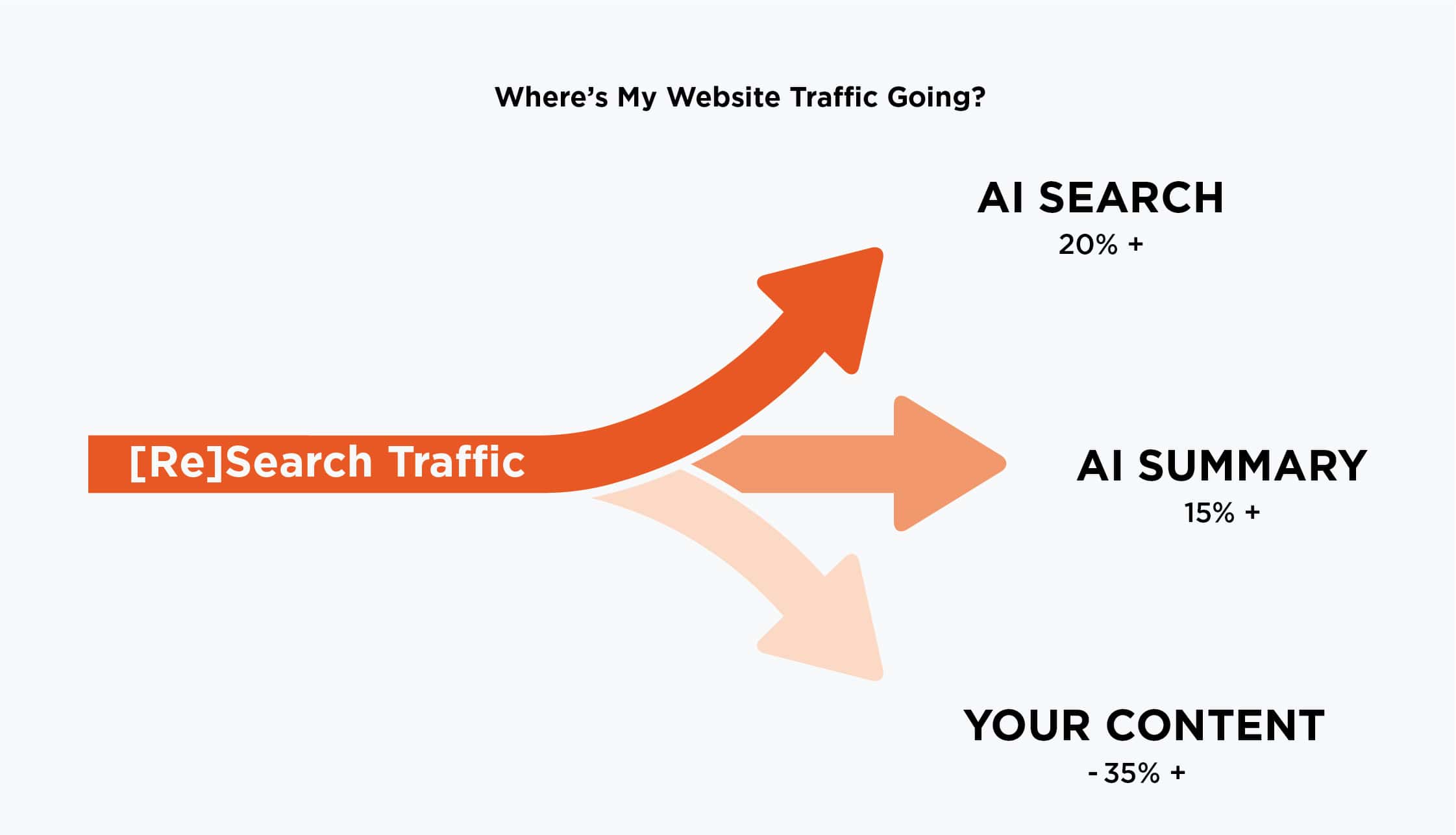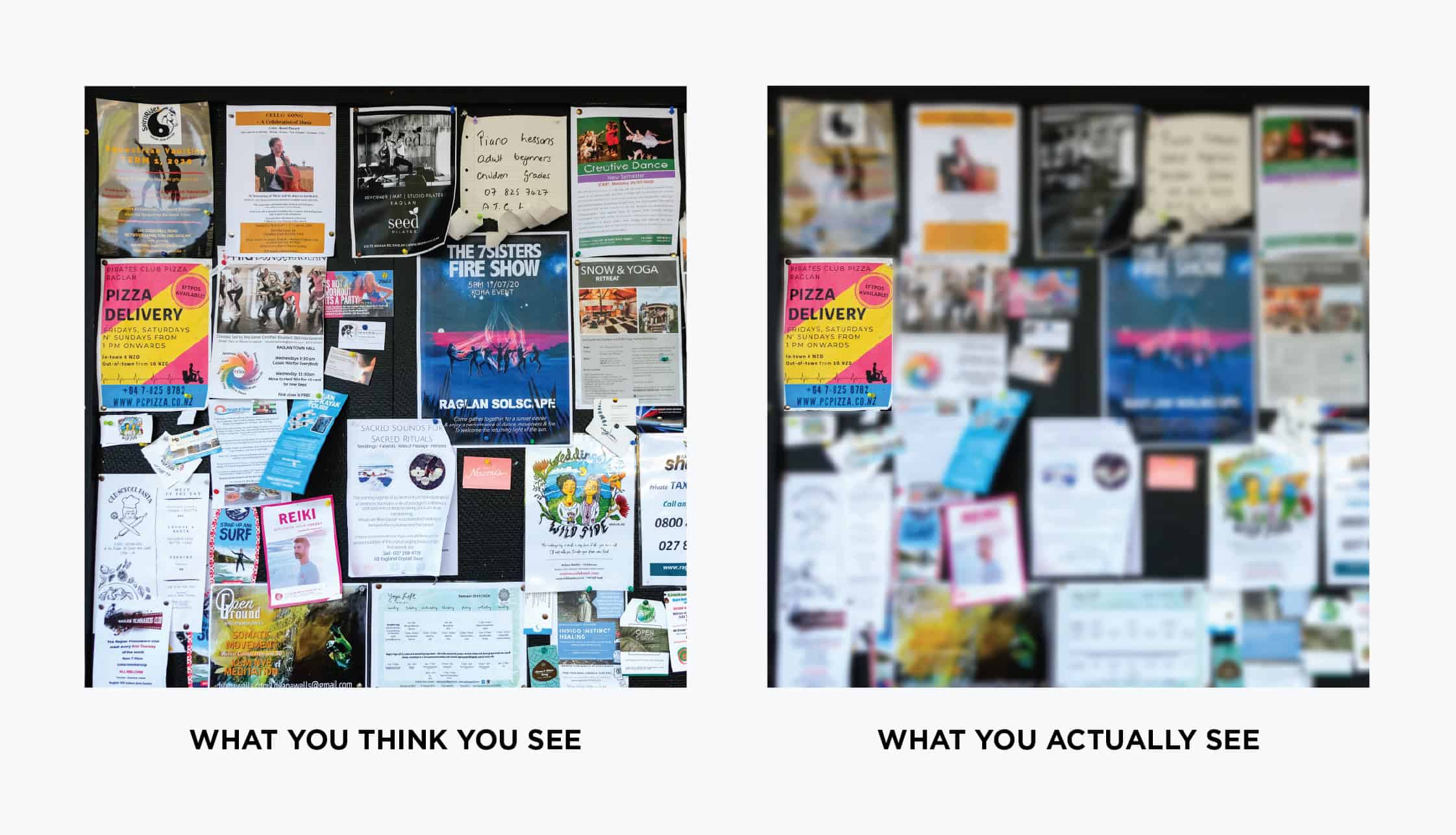
Menu
Menu
We are wired at birth to look for easy and useful ways to categorize, interpret, and simplify the world around us. Neuroscientists call this neuroplasticity, but there are many everyday labels: “muscle memory” in sports, “playing in the pocket” for musicians. It’s all the same process—our brains get better at what we practice, and they get ruthlessly efficient at ignoring whatever doesn’t serve the task at hand.
That’s why marketing tactics get stale. Our brains are incredible filters, constantly updating their “software” to minimize low-value tasks. The more repetitive and less relevant the stimulus, the faster it’s pushed aside. It’s not malice; it’s biology.
Try this: focus on the letter “s” in this sentence and attempt to read the words around it without moving your eyes. You’ll quickly discover that your eyes only see fine detail in about 1% of your visual field—roughly 3–4 words at a time. Everything else is stitched together by your brain into what feels like a seamless, high-resolution reality. It’s an illusion. And if your brain decides the details aren’t relevant, it simply won’t process them.
The same goes for memory. If information isn’t deemed important to the task at hand, it never makes the cut. We literally don’t see or remember it, no matter how “visible” it technically is.

Here’s a quick one you can try: watch the short video below where people are passing a basketball and count the number of passes made by those in white shirts. Give it your full focus—it’s a bit trickier than it sounds.
Done? Most people who try this miss something obvious: a completely out-of-place character walking right across the scene. How could you miss it? Because your brain was given a clear, structured task. Everything else was filtered out. If you’re already familiar with this experiment, give it a watch anyway—this version features a couple other surprises.
Here’s a write-up in Psychology Today if you’d like more of the backstory.
These aren’t just fun party tricks—they’re hyper-relevant to marketing. If your message doesn’t break through someone’s mental filters, in practical terms it doesn’t exist. This is why entire categories of digital tactics lose steam: subject lines get skimmed past, banner ads get tuned out, demo invites get ignored. The brain adapts. As soon as enough people get exposed to a new tactic, it starts losing efficacy. It’s a digital arms race where an exchange of investment, training and implementation sometimes yields better results. It’s “marketing inflation”, or as a peer likes to put it, “it’s a hamster wheel that spins a little bit faster each month.”
Offline communications bypass these filters in ways digital struggles to. Tangible experiences—a striking lobby, an elevated unboxing, a personally addressed postcard, a catalog instead of a PDF—demand sensory engagement. They’re harder to ignore, and they stick. According to the Millward Brown study and post-COVID research on digital vs. print learning, physical media not only captures more attention, it’s also better remembered and more trusted.
Trust is the kicker. With over 1 million phishing sites and 8 billion spam emails a day, consumers are understandably skeptical of digital-first offers. But a high-quality piece of print, or a real-world brand experience? Those cues still carry weight. They’re harder to fake, and therefore easier to trust.
Offline also creates “double impressions.” Roughly 30% of U.S. households are enrolled in the USPS Informed Delivery® program and these emails receive an average 62% open rate, meaning recipients often see a digital preview of mail before it hits their box. That’s awareness before the tactile experience even happens—and 1.6x the exposure.
This isn’t about ditching digital. It’s about recognizing where it falls short—especially at the top of the funnel—and bringing offline tactics back into the mix. The science is clear: human brains are built to filter out the repetitive and irrelevant. The more saturated digital gets (and AI is only accelerating that trend), the more valuable tangible, trust-building experiences become.
“Omnichannel”, or even “multichannel” marketing have become jargon. They’re buzz words that make it easy to tune out whatever’s next. Yeah, they’re known to describe campaigns that dramatically outperform single channel approaches, and generally imply offline components. Ignoring the claims, solutions and everything else “omni” goes right back to how our brains work.


So, there’s no specific pitch here. Every brand, industry and market segment is different. Applying the root principles: digital saturation is real, getting worse and is rapidly triggering our audiences to create filters that block messaging tactics in the awareness stage.
Looking for strategic offline communication alternatives is an opportunity. It’s harder to scale and has unique barriers like print, postage, fabrication, installation, travel expense, material cost, etc. But, these barriers are exactly why it works.
When everyone else is competing on screens, the brands that command physical spaces are skipping lines. It’s science. It’s intuitive. It’s measurable—and, it’s attainable.
For a mathy comparison of print vs. digital, check out this article: The Math: Digital vs. Direct Mail Advertising
If you would like to talk to an offline communications expert, please reach out. Team Thysse has deep subject matter expertise and industry experience to offer—and we’re happy to share that with you.